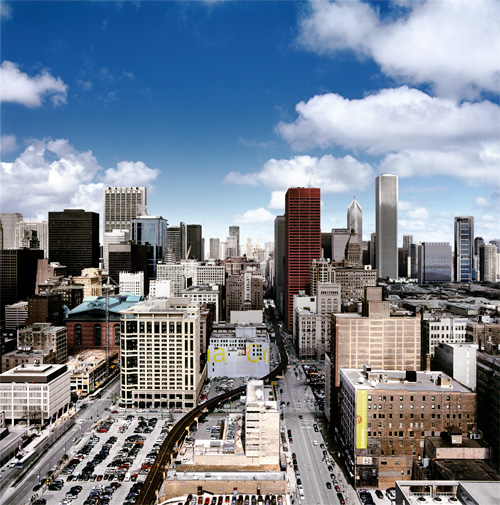Multi-Exposure Portfolio
An introduction to my multiple exposure transparency process.
Posted Jul 11, 2007
Transparency film offers ultra-fine detail and precise color rendering but it lacks the exposure latitude of negative film. I have developed a method of combining multiple transparencies to create a highly detailed image with greater range than any negative film. This method builds on digital & analog traditions, offering new insight into the world around us.
Depending on the size of the frame and camera used, a roll of transparency film can yield up to 32 exposures. The only difference between each exposure is the amount of light passing through the lens. Save that one exception, the camera is not touched for fear of moving the frame. Film advance and shutter release are performed remotely.

Each frame is scanned at 4000dpi, then mined for properly exposed areas. The final image is a puzzle built from different parts of each exposure. A street might come from one frame, a rooftop from another and a set of windows from another. It is impossible to capture these scenes under the constraints of traditional photography.

Time is elongated as the final image may record a span over 30 minutes. Viewed at this distance from reality, temporary interference disappears. People, cars, stray clouds, even the effects of pollution are removed.
Major metropolitan areas have evolved into extraordinarily complex and beautiful environments. They can be overwhelming in their variety of colors, textures and shapes. This density of information gives them a life of their own. My photography preserves these environments, celebrating their existence and exploring their details.